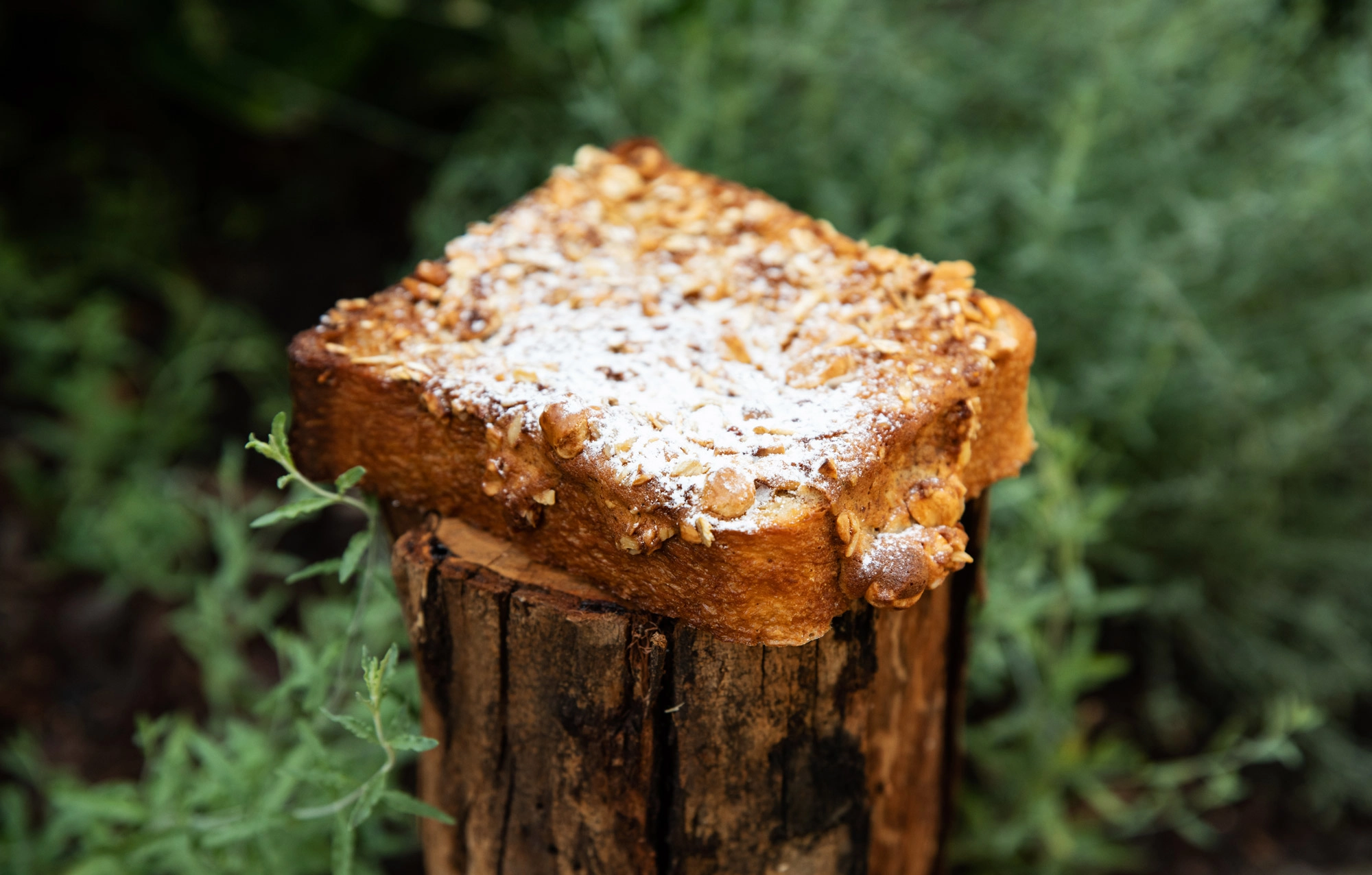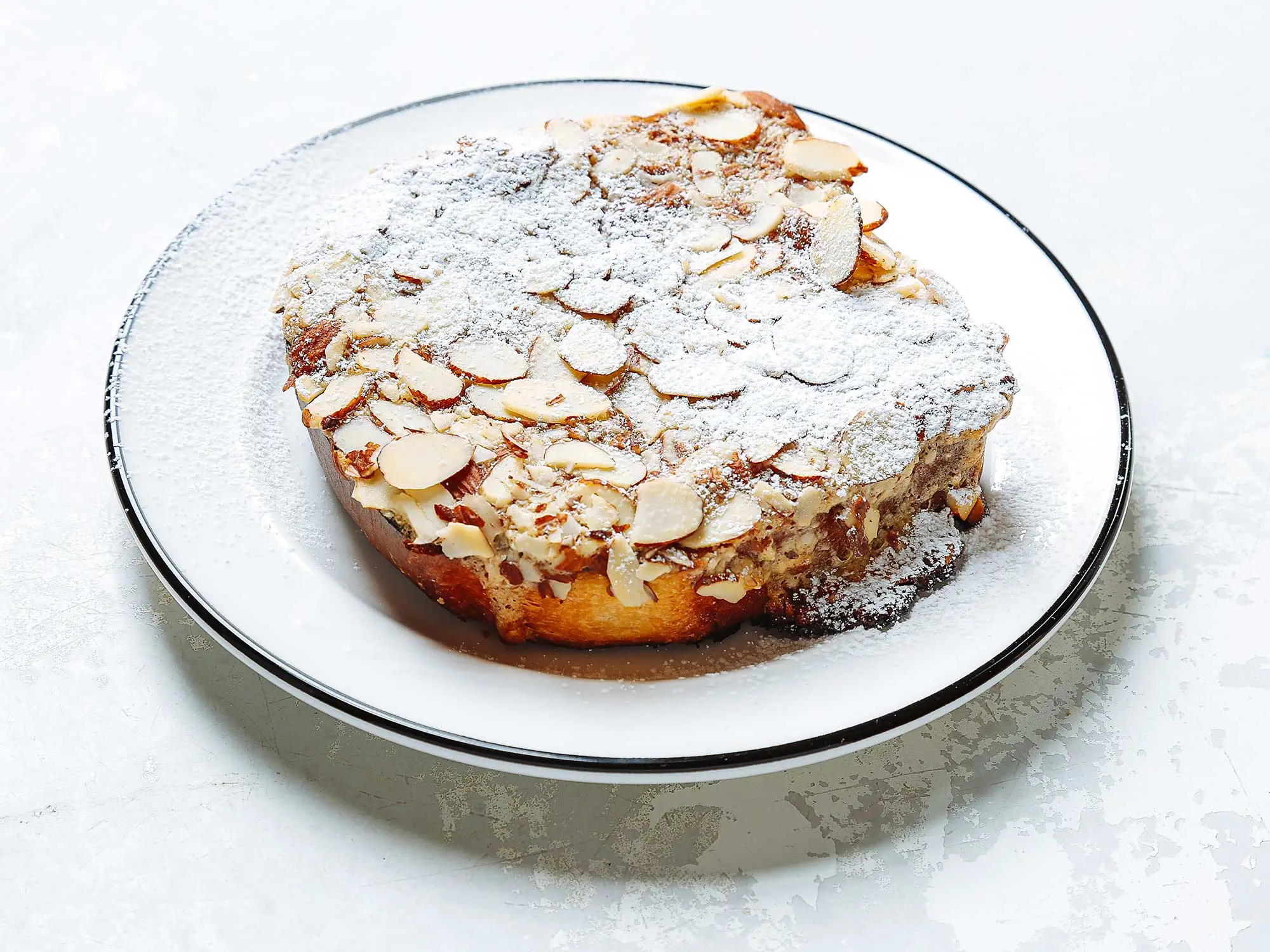Bostock
- rosemary
- Mar 19, 2023
- 4 min read
"quite possibly the best-tasting yet widely unknown breakfast treat you’ll find." Erin Clarke/Well Plated

Do you know what a bostock is? Well the above is the first example I came across - Rum and marmalade bostock from Rob Andrew in The Guardian. And no it's not French toast, but it is French even though it sounds like working class British to me - maybe even a kind of drink, but not a French piece of patisserie that is hard to find in 'ordinary' French patisseries but which stars in glamorous 5 star Paris establishments such as Pierre Hermé (on the left) and Ladurée (on the right).
We even have our own glamorous versions here in Melbourne - at All Are Welcome in Northcote, presided over by a Russian 3 star Michelin pastry chef, and at Wildwood Bakery which describes their version - shown on the right below - thus:
"Indulge with sweet Shokupan and macadamia and wattle seed liqueur frangipane, topped with Piedmont hazelnut muesli."
It will set you back $8.00. What is shokupan? Oh - silly me - it's that Japanese sweet milk bread.
All so fancy but with such a dubious - yes dubious - name. It's a British northern surname as well, and I suppose that's what made me immediately think working class. And 'bostock' is certainly not very French sounding - it's somehow too hard a sound. I have tried but found no answer to why it is called bostock, not even a guess. Nobody seems quite sure where it originated either, although they seem to think Normandy and the 1930s - but with no definite facts. It's all very mysterious.
So what is it? Well it's a slice of stale brioche, soaked in syrup, topped with an almond paste or frangipane, maybe some fruit or almonds on top, which is then baked in the oven:

"the perfect combination of creamy, custardy and crunchy, all at the same time." Curtis Stone
And this is his version which he calls simply Orange bostock and which was published in Gourmet Traveller.
And if you don't happen to have any brioche - or Shokupan come to that - handy, then any stale light and fluffy white bread will do. I don't think this is a sourdough thing, although maybe a pane di casa would be Ok. You need something fluffy it seems to me. Jamie Oliver suggests hot cross buns and I see that. They're sweet and soft.

David Lebovitz who is based in Paris, and therefore is sort of the close to the source expert, has a basic recipe which uses bought almond paste, not, he stresses. marzipan which is too sweet. He does say that the British call almond paste marzipan, and I don't think we can buy anything called almond paste here. He's right about marzipan being sweet though. I bought some a while back for something and I did think it was very, very sweet. So best, I think to go with the frangipane which you will find in most of the recipes online. And it's very easy to make.
Back to origins. David Lebovitz and many others think that it was fundamentally an invention of baker/patissiers who had leftover brioche which had gone slightly stale. Waste not, want not and all that. Which sounds right. And which to my mind probably means it's been around as long as brioche. But why bostock? Is it a corruption of 'beau' something? 'Beau' meaning beautiful. But I cannot think of anything French that sounds anything like 'stock'. And honestly it doesn't sound good does it? You wouldn't be drawn to it by the name would you? But then I guess you would be looking at it in the patisserie so the name wouldn't matter.
Pastry cooks being pastry cooks of course, sooner or later, much fancier versions appeared. One of them - Zoë Kanan - an American pastry chef I think:
"tops each one with whatever bits of fruit are in the fridge. Kanan particularly loves using halved or quartered roasted stone fruit or fresh blueberries—though dried fruit could work just as well. Same with a layer of jam or a few squares of chocolate hiding beneath the almond cream. She also likes to shake things up by flavoring the simple syrup and almond cream with spices like cardamom and cinnamon." Taste Cooking
Here are a few examples, including her Cinnamon apricot bostock that I found on the net, but there are many more: Apple cinnamon bostock from Kat Craddock of Saveur; Strawberry almond bostock from Claire Saffitz from delicious.; Bostock with Earl Grey prunes from Longshot in Melbourne, as featured in Gourmet Traveller and the really fancy vaguely Middle-Eastern Rose pistachio bostock from James Clarke, executive chef at the Dominique Ansel Bakery (inventor of the cronut) in London
And how do you eat them? Well with a pastry fork I'm guessing for the fancier ones, but I think the original was meant to be eaten with your hands - like a pain au chocolate, and this is advice from Zingermans - an American bakery I think:
"When you eat a bostock, start with the crust around the sides. It’s a little darker, and has a slightly deeper, toastier flavor. The almond frangipane often dribbles over the edges and down the sides just a tad, and it adds a sweet, nutty richness. Eating the sides first saves the best for last: the center. The middle of the bostock really soaks up the orange syrup, so the fluffy brioche becomes moist and toothsome. Bright citrus notes harmonize with sweet, nutty almond."
Bill Granger, the breakfast king, doesn't seem to have discovered the bostock as yet, preferring French toast - which is eggier. Which is a little odd. So have a go next time you have a spare bit of stale brioche hanging around - or maybe a hot cross bun. Or throw a breakfast party and buy a brioche loaf in advance. Then make them in bulk. Now that might be easier. It's a bit of a faff for one person - probably simpler to stick with French toast.



















Comments